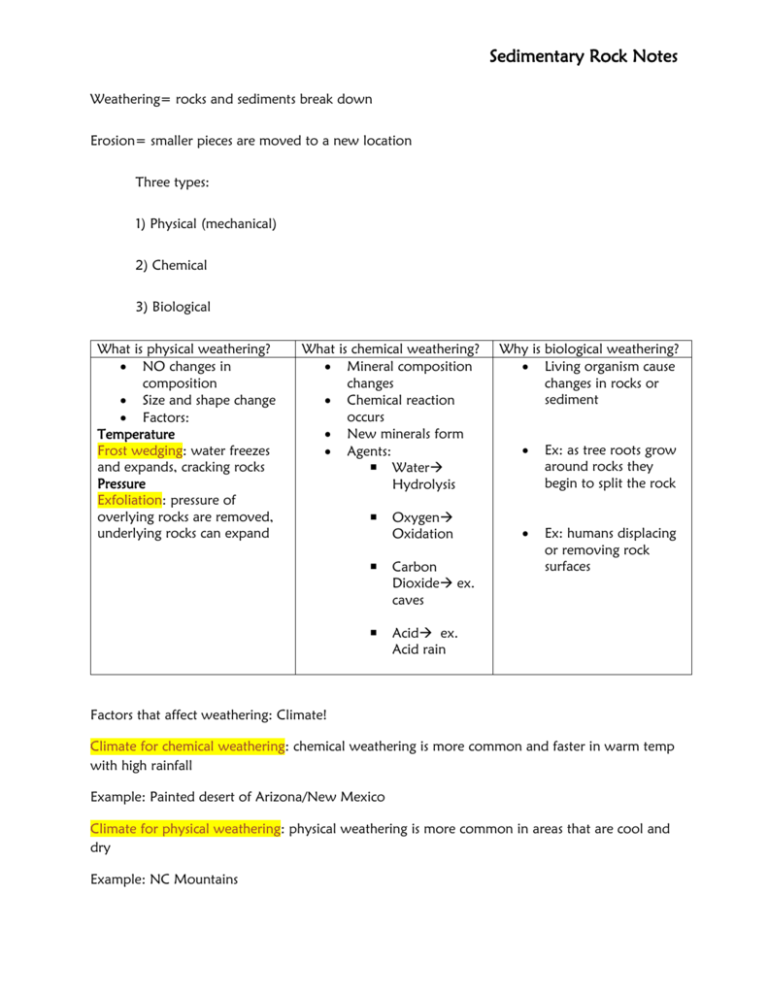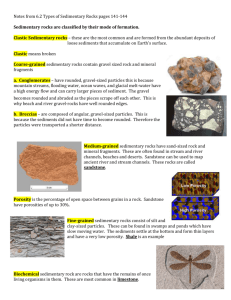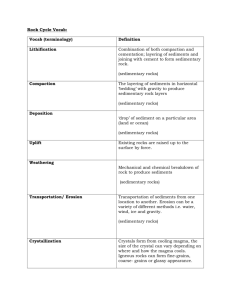Sedimentary rOCKS
advertisement

Sedimentary Rock Notes Weathering= rocks and sediments break down Erosion= smaller pieces are moved to a new location Three types: 1) Physical (mechanical) 2) Chemical 3) Biological What is physical weathering? NO changes in composition Size and shape change Factors: Temperature Frost wedging: water freezes and expands, cracking rocks Pressure Exfoliation: pressure of overlying rocks are removed, underlying rocks can expand What is chemical weathering? Mineral composition changes Chemical reaction occurs New minerals form Agents: Water Hydrolysis Oxygen Oxidation Carbon Dioxide ex. caves Acid ex. Acid rain Why is biological weathering? Living organism cause changes in rocks or sediment Ex: as tree roots grow around rocks they begin to split the rock Ex: humans displacing or removing rock surfaces Factors that affect weathering: Climate! Climate for chemical weathering: chemical weathering is more common and faster in warm temp with high rainfall Example: Painted desert of Arizona/New Mexico Climate for physical weathering: physical weathering is more common in areas that are cool and dry Example: NC Mountains Sedimentary Rock Notes Formation of Sedimentary Rocks Even though igneous rocks are the most common in Earth’s crust, most of Earth’s surface is covered in sediment. Sediments: pieces of solid rock material re-deposited by any earth’s natural forces Steps: 1) Weathered particles get moved downhill: erosion 2) Get laid down/sink: deposition 3) Deposits become layered: sorting 4) Layers stack up on top of each other: burial 5) These processes add material to sedimentary basins 6) As burial occurs, layers are subjected to greater heat and pressure 7) These conditions cause lithification lithos = stone Sediments – Sedimentary Rocks Two steps: Compaction: excess water and air are squeezed out Cementation: new minerals form Sedimentary Basin- layers newer on older The primary features of sedimentary rocks are horizontal layers called bedding. Graded bedding Bigger on the bottom Cross-bedding Slanted layers Sedimentary Rock Classification Organic sedimentary rocks: from previously living things Sedimentary Rock Notes Chemical sedimentary rocks: from evaporates Clastic sedimentary rocks: loose deposit on the earth’s surface (the most common)








